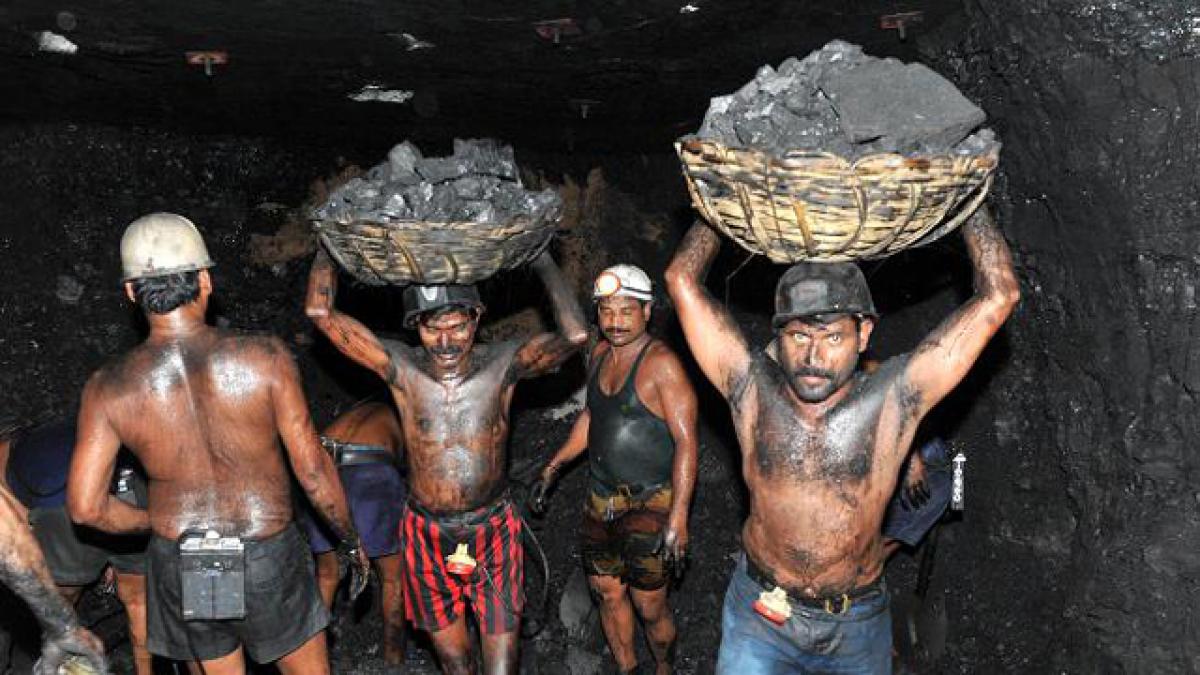Live
- Telangana CM Revanth Reddy Suggests Prioritizing the Most Needy for Indiramma Housing Scheme
- Telangana School Holiday: SFI Announces Bandh on November 30 Over Food Poisoning Cases
- NIT Warangal Library Trainee Recruitment: Last Date for Applications Tomorrow
- Singareni Recruitment 2024: Notification for 64 Internal Job Vacancies Application Deadline Announced
- A Teenager's Fight for Justice: Hyderabad Court Sentences Father to Life for Heinous Crime
- The Role of AI in Diagnostics, Treatment, and Patient Care
- Pearl Academy and Tech Mahindra Collaborate to Establish Makers Lab in Bengaluru
- “The Best Time to Start Retirement Planning is Now”, Says HDFC Life’s Latest Campaign
- Sun Life Global Solutions Partners With IIT Indore to Foster Innovation
- Hero Motocorp Launches “Hero For Startups”
Just In

Why world wants us to cut coal use. India’s development dilemma centres around a basic calculation: the carbon emission for an average Indian is only marginally higher than the carbon dioxide produced in flying one passenger from Tokyo to San Francisco.
As India industrialises and incomes increase, more Indians will use electricity and drive vehicles and fly, leading to increased carbon emissions. But India accounts for only 8.5 per cent of the world's coal usage, while it has 17.5 per cent of the world's people
India’s development dilemma centres around a basic calculation: the carbon emission for an average Indian is only marginally higher than the carbon dioxide produced in flying one passenger from Tokyo to San Francisco.

In other words, while a commonly cited fact is that India, after China and the US, is the third largest emitter of carbon dioxide – the main gas implicated in warming the planet – globally, there is, seemingly, enough data to absolve India of special responsibility. However, if India follows China's route of development by burning more coal, the consequences for the planet – and India – are likely to be devastating. This will further worsen as other developing nations with large populations, such as Bangladesh, Nigeria and Pakistan, follow this route.
What should India's path be – coal-based or not?
Citing total emissions is misleading. India's annual carbon dioxide emission is 1.93 billion tonnes. India's emissions are spread among 1.27 billion people. On an average, a citizen of Japan is responsible for seven times as much carbon dioxide as an Indian. Citizens of countries such as Britain, Germany, Canada and the US have a carbon footprint between five and 12 times that of an Indian.
China and the US, with just less than one-quarter of world's population, account for 44 per cent of current CO2 emissions. Europe (with Russia) accounts for another 20 per cent of emissions. India accounts for 5.5 per cent. So, a vast majority of greenhouse gases are coming from the developed world plus China. Between 1965 and 2013, as much as 1.1 trillion tonnes of CO2 was emitted.
Europe (including Russia) accounts for 33.3 per cent of this total, while the US has a share of 24.3 per cent. So, the West has been responsible for 57.6 per cent of CO2 emitted over the past 48 years. If China and Japan are included, the combined share goes up to 76.2 per cent, more than three-quarters of all carbon dioxide emissions over this period. India's contribution is relatively marginal and continues to remain 80 per cent below the world average.
How right, then, are leaders from the US and Europe when they urge India to do more to curb emissions?
As India develops, CO2 emissions will rise. As much as 25 per cent of Indians still don't have access to electricity; Automobile ownership in India is 13 vehicles per 1,000, compared to 439 in the US, 617 in Japan and 34 in China; Indians fly less than nationals of other major economies.
As India industrialises and incomes increase, more Indians will use electricity and drive vehicles and fly, leading to increased carbon emissions. But India accounts for only 8.5 per cent of the world's coal usage, while it has 17.5 per cent of the world's people. India has not been responsible for global carbon emissions in the past, and its current emissions are way below the needs of its population.
The argument goes that as a responsible nation, India needs to move away from coal and increase the use of low-pollution energy sources, mainly nuclear power, hydropower, natural gas and renewable energy. If India chooses more expensive forms of energy over coal, it will contribute to global common good – at its own immediate economic cost. (In arrangement with IndiaSpend.org, a data-driven, non-profit, public interest journalism platform)
By Amit Bhandari

© 2024 Hyderabad Media House Limited/The Hans India. All rights reserved. Powered by hocalwire.com







